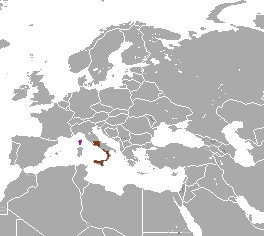Facts About Corsican hare
The Corsican hare, also known as the Apennine hare or Italian hare, is a distinct species found in southern and central Italy, as well as Corsica. First described in 1898, it was initially considered a subspecies of the European hare or the Cape hare. However, modern science has recognized it as a separate species, primarily because it does not interbreed with the European hare and possesses unique genetic traits that developed during the last ice age.
In appearance, the Corsican hare closely resembles the European hare. It is brown with a cream-colored belly and grey underfur, but it is somewhat smaller. These hares inhabit diverse environments such as maquis shrubland, grasslands, cultivated fields, and even sand dunes. They are more commonly found on the island of Sicily than on mainland Italy.
Regrettably, the Corsican hare faces significant challenges. Habitat loss, hunting, and competition with rabbits and European hares are major threats. Due to these pressures, the Corsican hare is listed as "Vulnerable" on the IUCN Red List.
Conservation of the Corsican hare is complicated. Their resemblance to the European hare makes it difficult to effectively enforce hunting bans. Despite legal protections, their population continues to decline, underscoring the urgent need for sustained conservation efforts to help this species recover and thrive.

 Austria
Austria